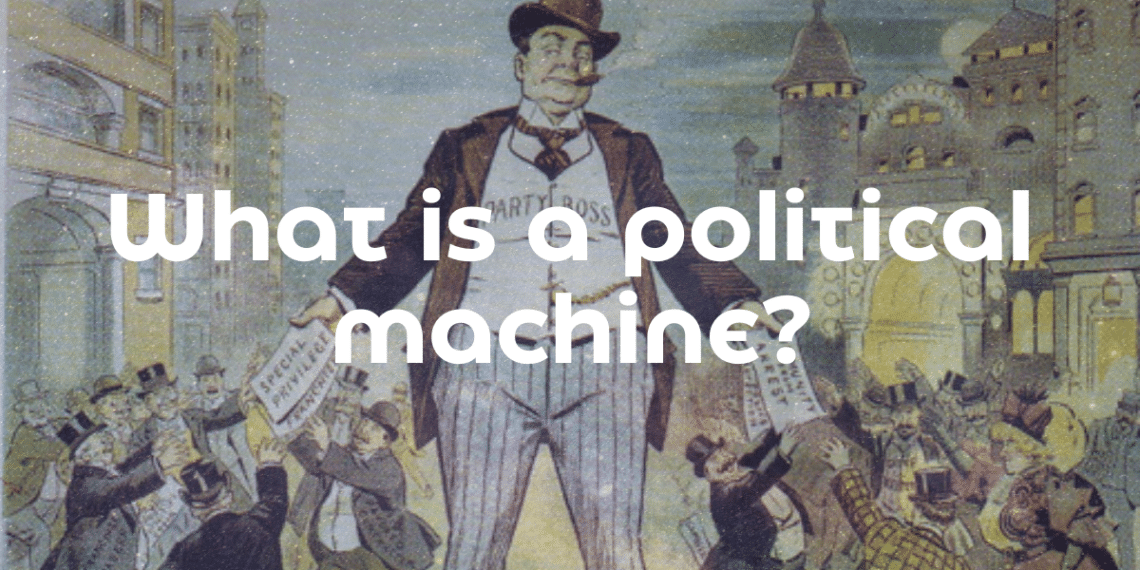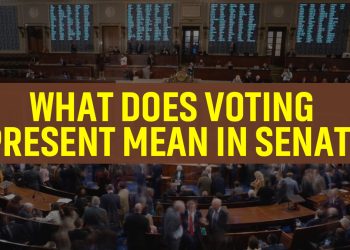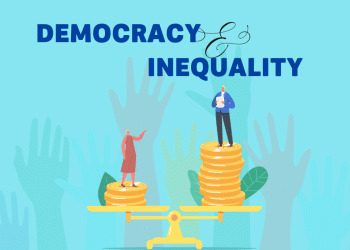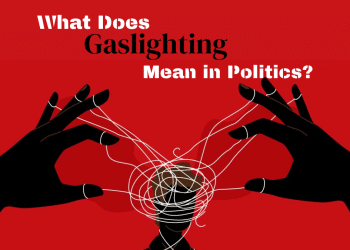Democracy was not always as free as it is today. In the recent past, the politics of the USA was riddled with Political Machines. These “machines” have a history of corruption and manipulation. So, what is a political machine? Let’s find out in this article.
American politics can seem like a giant puzzle with lots of parts that fit together. One of those parts is called a political machine. You might have heard this term in discussions about how politics works. But what is a political machine? In this article, we’ll dig into the world of political machines. We’ll examine their history, setup, what they’ve done in American politics, and if they still matter today. So, let’s unravel the mystery of political machines!
We must go back in time to understand political machines and learn about their history. These machines have played a significant role in shaping American politics, especially in cities. They were like powerful groups that could make things happen but weren’t always on the up and up. We’ll explore this in simple terms so you can get a clearer picture of how politics works in the USA.
What is a political machine?
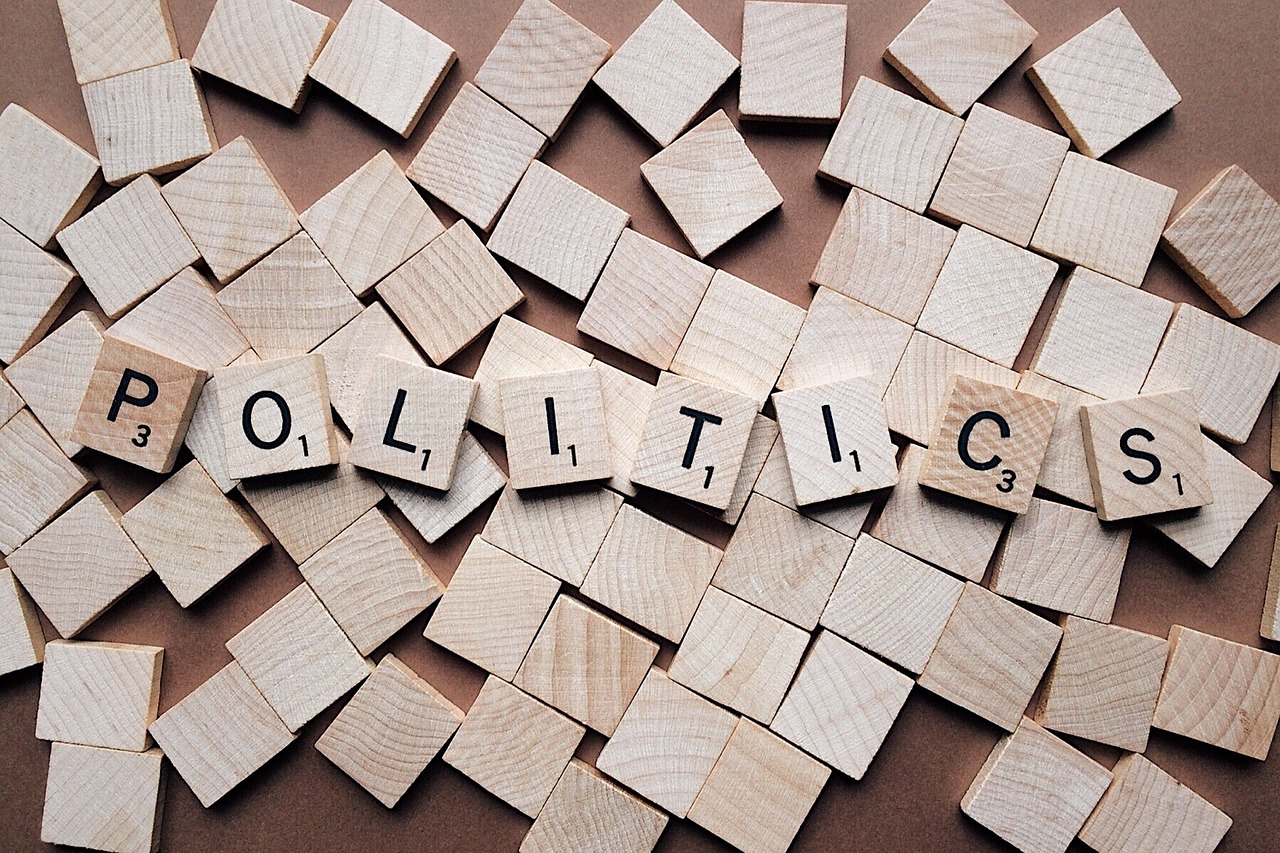
A political machine is like a behind-the-scenes team in a political party. It’s a group that’s organized and keeps much of their work secret. This group is super close-knit, meaning they work closely together and trust each other. They have a big say in what their party does and who gets chosen as candidates. Their main goal is to hold on to power and make sure they have control over what happens in their party.
To do this, they use tactics like giving out resources strategically, which means they decide who gets what to help them win. They might also play with how elections work to get the desired results. And they’re good at getting people to go out and vote for their candidates.
So, in simple terms, a political machine is like a secret group within a political party that works together to stay in power by deciding who gets what, ensuring they win elections, and getting people to vote for them.
History of political machines

In the 19th century, America was changing rapidly. Cities were growing, and waves of immigrants were arriving. But, these cities often lacked essential services, and many newcomers had no political voice. This is where political machines came in.
One famous example was Tammany Hall in New York City, run by figures like William “Boss” Tweed. It was a powerful Democratic Party organization controlling city politics for much of the 19th and early 20th centuries. Tammany Hall showed how influential political machines could be.
These machines found strong support among immigrant and working-class communities. They provided jobs, services, and a sense of belonging. In return, these communities became loyal supporters of the machines and their chosen candidates.
However, it wasn’t all rosy.
- Political machines had a dark side
- Then came the reforms
- New challenges for political machines
- The legacy lives on
Political machines had a dark side:
- Corruption scandals: The secrecy surrounding political machines often leads to corruption. Tammany Hall, for example, was involved in scandals like embezzlement and bribery that eventually led to its downfall.
- The spoils system: Political leaders used the patronage system to reward supporters with government jobs and contracts. While it created loyalty, it led to unqualified people in power and misused public resources.
Then came the reforms:
In the early 20th century, reform movements emerged to rein in the excesses of political machines:
- Progressive reforms: Reformers pushed for civil service reforms, which replaced the patronage system with a merit-based approach to government jobs. This reduced the machines’ power to hand out jobs as political favors.
- Anti-corruption efforts: Laws were passed to fight political corruption, including campaign finance rules and anti-bribery laws to hold politicians and machines accountable.
New challenges for political machines:
As time went on, political machines faced challenges:
- Changing demographics: As ethnic and racial communities spread across cities and suburbs, the loyalty that fueled machines waned. It became harder for devices to maintain their voter bases.
- Technological advances: New communication and transportation methods allowed candidates to connect directly with voters, reducing the need for the door-to-door campaigning that machines relied on.
The legacy lives on:
But the legacy of political machines lives on:
- Modern political strategies: Today’s campaigns use many tactics from the machine playbook, like grassroots organizing, mobilizing voters, and focused messaging.
- Interest groups and super PACs: These groups, though not officially part of political parties, employ methods similar to political machines, including fundraising, voter turnout efforts, and endorsements.
In summary, political machines were influential powerhouses in 19th and early 20th-century American politics. While they’ve mostly faded away, their impact can still be seen in modern political strategies and organizations, reminding us of their lasting legacy in American history.
How did political machines contribute to urban political corruption?

Political machines were groups that controlled city politics in the past. They did things that encouraged dishonest behavior within their group. These groups were usually led by one powerful person called the “boss.” They made a culture where they favored their friends and supporters, which was not good for fair politics.
- Selected incentives & special treatment
- The eerie secrecy & corrupt loyalties
Selected incentives & special treatment:
One way these political machines caused corruption was by giving jobs and special treatment to people who were loyal to their group, not because they were good at the job. So, sometimes, unqualified people got important positions just because they were friends with the political machine. This made the city’s government less effective and fair.
Also, these political machines got support and money from rich people and big businesses. In return, these rich supporters wanted special treatment from the government, like getting good business deals or getting away with things others couldn’t. This system made corruption more likely because politicians and party leaders cared more about helping their rich friends than doing what was right for everyone.
The eerie secrecy & corrupt loyalties:
Another problem was that these political machines did things secretly and didn’t let the public see what they were doing. This secrecy allowed the leaders of these groups to do dishonest things like bribery or stealing money without getting caught right away.
Lastly, the people in these political machines had to be extremely loyal. They were not allowed to disagree or report corruption. If they did, they faced punishment. This loyalty culture made it hard for honest people in the group to speak out against corruption.
So, in simple terms, political machines caused corruption in city politics by favoring their friends, taking money from rich supporters, doing things secretly, and demanding absolute loyalty. This led to dishonesty in city government and made people lose trust in the political system. Reforms and more awareness were needed to stop these corrupt practices over time.
What were some ways political machines hurt cities?

Indeed, let’s begin by understanding some of how political machines had a detrimental impact on cities. Political machines, while often claiming to serve the interests of their communities, sometimes engaged in practices that harmed the very towns they operated within. These practices included corruption, mismanagement of resources, and favoritism, among others. By exploring these negative aspects, we can gain insight into the challenges cities face under the influence of political machines.
Corruption and bad management:
Political machines could harm cities by being corrupt and not managing public resources properly. Leaders in these machines often used their power to give government contracts to their friends, even if those friends weren’t the best for the job. This meant that the services and projects the city needed were not as good as they should be.
Wasting money:
These political machines also liked to give jobs and contracts to people who were loyal to them. This created a big government with too many people on the payroll, costing the city a lot of money. This money could have been spent on essential things like fixing roads or keeping the city safe.
Playing favorites:
The leaders in these machines often put their family and close friends in essential jobs, even if they weren’t the most qualified. This meant that people who were good at their jobs got left out, making it harder for everyone to get a fair chance.
No accountability:
Political machines did things in secret, so it was hard for regular people to hold them responsible for what they did. This meant they could get away with doing bad stuff without anyone noticing.
Messing with democracy:
These machines liked to control who got to run for office. They picked people loyal to them, which didn’t give voters many choices. This wasn’t fair and went against the idea of everyone having a fair say in elections.
No room for different opinions:
People inside these machines had to agree with everything the leader said. If they didn’t, they got in trouble. This made it challenging for anyone to speak up if they saw something wrong.
Not taking care of the city:
Sometimes, these political machines don’t spend money on essential things like fixing roads or keeping the city clean. This made the city look bad and made life harder for people there.
Taking advantage of some communities:
In some places, these machines took advantage of communities that didn’t have a lot of money or power, like immigrant or working-class neighborhoods. They promised jobs and help, often making these communities even more dependent on the machines.
People stop trusting the government:
The bad stuff that happened because of these political machines made people lose trust in the government and politics. Many people got fed up and stopped getting involved in their communities.
Long-lasting problems:
The problems caused by political machines could stick around for a long time, even after the devices are gone. Things like unfairness, bad roads, and corruption could be hard to fix.
While political machines might have helped some people in the short term, they often hurt the cities they controlled. They wasted money, played favorites, and made it hard for regular people to have a say. These problems could last a long time, making it challenging for cities to improve. It was only when people demanded change and got involved in their communities that things started to improve.
Structure of a political machine
A political machine operates as a well-organized and often secretive entity within a political party, and its structure consists of several crucial elements that work together to exert control and influence. Here’s an exploration of these key components:
- The boss.
- Ward and precinct leaders.
- Patronage and the spoils system.
- Electioneering and voter turnout.
- Funding and financiers.
- Community engagement.
- Control over nominations.
- Secrecy and cohesion.
- Influence on local governance.
- Ethical concerns and corruption.
1. The boss:
Think of the boss as the leader of a team. Just like a coach in sports, they make important decisions and guide the team’s strategy. In politics, the boss has much power and can decide which candidates the party supports. They also make sure everyone in the party is on the same page.
2. Ward and precinct leaders:
These folks are like the local representatives in your neighborhood. They’re the ones who talk to people in the community and find out what they need. Their job is to ensure everyone in their area supports the candidates that the machine endorses.
3. Patronage and the spoils system:
Imagine a pie, and the machine gets to slice it up and give out pieces to its loyal supporters. These pieces represent things like government jobs, contracts, or special favors. It’s a way to reward people who stay dedicated to the machine.
4. Electioneering and voter turnout:
On Election Day, the machine goes into action. They use various strategies to make sure their candidates win. For example, they find out who supports their candidates and make sure those people go out and vote. Sometimes, they might use tactics that aren’t entirely fair to get more votes.
5. Funding and financiers:
Money is significant in politics. The machine has wealthy friends, like rich individuals or big companies. These friends give money to the machines in exchange for influence and favors. It’s a bit like financial support to engineer the machine to keep running.
6. Community engagement:
The machine wants to show that it cares about the community. They might offer help with things like jobs or services to make people feel like they need the machine. It’s a way to keep folks loyal and make them think the machine is seeking their interests.
7. Control over nominations:
Think of the machine as the talent scout for a sports team. They decide who gets to play in the big game, which in politics is the elections. They pick candidates who are on their side and have a good chance of winning. Getting the machine’s endorsement is often crucial for a candidate’s success.
8. Secrecy and cohesion:
The machine likes to keep things behind closed doors. Only a few people know what’s happening inside. This secrecy helps them maintain control and avoid getting caught doing anything that might look shady to the public.
9. Influence on local governance:
The machine has a say in how things run in your city or town. They make decisions about stuff like laws, budgets, and public services. These decisions directly affect your daily life, like the quality of your schools or the safety of your streets.
10. Ethical concerns and corruption:
Sometimes, the machine gets a bad reputation because of sneaky or unethical things they do. People get upset when they hear about stuff like bribery or cheating in elections. It raises questions about whether the machine is playing by the rules.
Understanding the structure of a political machine helps us see how it operates in politics. While the old-style machines aren’t as common today, their influence still lingers in modern politics. It’s important to keep an eye on how power and influence are used in politics, both in the past and today, to ensure a fair and transparent political system.
The impact of political machines on American politics

For much of American history, political machines played a crucial role in shaping the political landscape. Their influence was undeniable and left a lasting impact on various aspects of our politics:
- Shaping urban politics
- Mobilizing voting blocs
- Patronage and spoils system legacy
- Ethical scrutiny and reform
- Evolution of political tactics
- Influence on interest groups and super PACs
- Community engagement and services
- Lessons in Political Power
1. Shaping urban politics:
Think of political machines as powerful groups with a big say in how cities are run. They controlled local governments and had a voice in rules, budgets, and how public services like schools and hospitals were provided. This directly affected city folks, especially those in working-class and immigrant neighborhoods.
2. Mobilizing voting blocs:
Political machines were good at getting people to vote for their chosen candidates. They did this by helping immigrant and working-class communities, offering jobs, and creating a sense of belonging. In return, these communities became loyal supporters who voted for the machine’s candidates. This tradition of getting people to vote still plays a significant role in elections today.
3. Patronage and spoils system legacy:
Imagine if you did a favor for a friend, and they helped you in return. That’s kind of like how the patronage system worked. Political loyalty was rewarded with government jobs or contracts. While this isn’t as common now, you can still find traces in some places where people might get jobs or benefits based on their political connections.
4. Ethical scrutiny and reform:
The shady stuff that some political machines did led to changes in politics. Back then, people got fed up with the corruption and scandals associated with devices. So, during the Progressive Era, they started making rules to fight corruption, make things more transparent, and create a fairer system of hiring government workers. These changes aimed to ensure machines had less influence and that politicians followed higher ethical standards.
5. Evolution of political tactics:
Some of the tricks that political machines use are still used today in politics. For example, they were good at organizing grassroots movements, sending targeted messages to voters, and getting people to vote. These are all essential parts of modern political campaigns.
6. Influence on interest groups and super PACs:
Even though traditional political machines have faded away, you can see their influence in how interest groups and super PACs operate today. These groups use similar tactics like raising money, getting people to vote, and giving their endorsements to candidates.
7. Community engagement and services:
Political machines are used to help out communities by offering social services, jobs, and support. This made people feel like the engine was looking out for them, which created loyalty. Some politicians and parties still do this today to win approval.
8. Lessons in Political Power:
Political machines are like textbooks on organizing and gaining power in politics. They show us how political groups can significantly impact elections and how they maintain control.
Political machines had a significant impact on American politics. Even though they’re not around the same way anymore, their influence is still felt in many aspects of politics today. From getting people to vote to the strategies used in modern campaigns, political machines have left their mark on American history and politics. Understanding this legacy helps us make sense of today’s political landscape and the enduring influence of machine politics.
The decline of traditional political machines

Certainly, let’s explore the decline of traditional political machines. These influential entities once held significant power in American politics but gradually lost their sway over time. The decline of these machines represented a major change in how politics operated, influenced by several important factors. Understanding this decline and its impact is crucial to comprehend how American politics has evolved over the years.
- Changing demographics.
- Technological advancements.
- Reforms and legal changes.
- Public awareness and scrutiny.
- Evolution into modern political strategies.
- Rise of interest groups and super PACs.
1. Changing demographics:
As time went on, American cities became more diverse. Different groups from various backgrounds moved to other parts of the city, even the suburbs. This made it more challenging for the traditional political machines to keep their hold on power. The machines relied on the idea that everyone in a particular neighborhood would vote a certain way. But with people moving around, that idea didn’t work either.
2. Technological advancements:
Back then, political machines were good at going door-to-door in their neighborhoods to get votes. They knew everybody, and they could talk to them directly. But then, things like TV, the internet, and social media came along. Now, politicians could reach out to many more people all at once. They didn’t need as much door-knocking, so the machines lost some power.
3. Reforms and legal changes:
People got fed up with the shady stuff that some political machines did, like giving jobs to friends in exchange for political support. So, they changed the rules. They made it so that government jobs had to go to the most qualified people, not just those with political connections. They also passed laws to keep politicians and political machines from being corrupt. These changes made it harder for the devices to operate as they used to.
4. Public awareness and scrutiny:
As time passed, more people realized that some political machines were up to no good. There were stories of corruption, embezzlement, and bribery scandals. For example, Tammany Hall was known for its shady dealings. As people became more informed about politics, they demanded honesty and transparency. The secretive nature of political machines started to backfire, and people lost trust in them.
5. Evolution into modern political strategies:
Even though the old-style political machines faded, their tricks didn’t disappear. Some tactics, like getting people excited about a candidate, knocking on doors, and sending personalized messages, are still used today. They’ve just been updated for the digital age.
6. Rise of interest groups and super PACs:
When traditional political machines lost power, other groups stepped in. Interest groups and super PACs are like the new kids on the political block. They might not be part of a political party, but they use similar tactics to get people to vote for their preferred candidates. They raise money, encourage people to vote, and endorse candidates like the old machines did.
In a nutshell, the old-style political machines lost their grip on American politics because of changes in the population, technological advancements, new rules to prevent corruption, increased public awareness, and adapting their tactics to modern campaigns. While the traditional machines are mostly a thing of the past, their influence can still be seen in how politics works today. It’s a reminder of the lasting impact of machine politics in American history.
Modern political machines

While a traditional political machine has primarily faded into history, it’s legacy endures in modern American politics. Today, we see variations of political machines in the form of well-organized political networks, interest groups, and super PACs. These modern machines continue to exert influence over the political landscape:
- Using technology to connect with voters.
- Getting support from regular folks.
- Raising money and finding backers.
- Tailoring messages to voters.
- Supporting candidates publicly.
- Getting people to the voting booth.
- Speaking up for policies they like.
- Staying connected to communities all year round.
- Ethical challenges and questions.
1. Using technology to connect with voters:
Modern political machines make use of technology to get in touch with people and encourage them to vote. They use things like social media, websites, and data analysis to figure out who might support them and then send messages that match what those people care about. It’s like how they used to knock on doors and talk to you, but now they do it online.
2. Getting support from regular folks:
Just like in the old days, modern political machines focus on building teams of regular folks who live in your community. These volunteers and community organizers talk to people in your neighborhood to get them excited about voting and supporting the candidates the machine likes.
3. Raising money and finding backers:
Money is still really important in politics, even for modern machines. They make connections with people, businesses, and interest groups who have money to spare. These backers give them the funds they need to run campaigns, advertise, and get people out to vote.
4. Tailoring messages to voters:
Modern machines use fancy computer analysis to figure out what different groups of voters like and dislike. They collect info on what issues are important to you, how you behave, and what you care about. Then, they create messages that feel like they were made just for you, hoping to get your vote.
5. Supporting candidates publicly:
Modern political machines don’t just work behind the scenes; they also publicly support the candidates they like. They endorse these candidates, from local elections to big national ones like the presidency. This endorsement can make a big difference because it shows that a candidate has powerful allies.
6. Getting people to the voting booth:
One of the main goals of modern machines is to make sure their supporters actually go out and vote on Election Day. They use things like phone calls, knocking on doors, and online campaigns to make sure their base shows up when it counts.
7. Speaking up for policies they like
Modern political machines don’t just care about elections; they also work to shape the rules and laws that govern our country. They do this by talking to elected officials and pushing for policies that match their goals and ideas.
8. Staying connected to communities all year round:
Unlike the old machines that only seemed to care during election time, modern machines try to stay in touch with communities all year long. They offer services, help out, and organize events to show that they’re here for you even when there’s no election happening.
9. Ethical challenges and questions:
Even though modern political machines have all these strategies, there are still concerns about how they operate. Some people worry that they’re not transparent enough and that they prioritize loyalty over picking the best candidates. These concerns raise questions about how well they follow the principles of democracy.
Conclusion
Political machines have left a lasting mark on American politics. These organized, often secretive groups shaped urban politics, rallied voters, and influenced elections. While traditional machines are mostly gone, their tactics live on in today’s political landscape. Modern networks, interest groups, and super PACs use similar strategies to achieve their goals.
The history and ongoing impact of political machine highlight the complexity of American politics. They’ve significantly affected cities, sometimes causing corruption, mismanagement, and a lack of accountability. However, they’ve also demonstrated the power of community involvement and collaboration for positive change.
As our democracy evolves, the lessons from political machine remain relevant. Transparency, accountability, and civic engagement are crucial. By understanding how political machines operated in the past, we can better navigate today’s political environment. This understanding helps ensure our democracy remains robust and responsive to the needs of the people.

